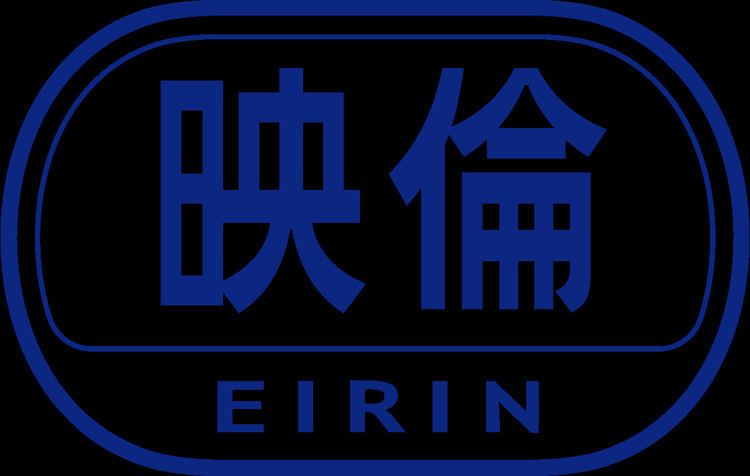 | ||
Eirin (映倫) is the abbreviated name for Eiga Rinri Kanri Iinkai (映画倫理管理委員会), Japan's movie regulator. Eirin was established on the model of the American Motion Picture Producers and Distributors of America's Production Code Administration in June 1949, on the instructions of the US occupation force. The original name, Eiga Rinri Kitei Kanri Iinkai (Motion Picture Code of Ethics Committee), was condensed after independence, during reorganization in 1956, to Eirin Kanri Iinkai, but was already colloquially known as Eirin.
Contents
Description
As with other countries, Eirin classifies films depending on their suitability for minors, depending on whether they contain sexual or violent material. Eirin's defenders argue that its independence shields film makers from the more draconian alternative, government censorship.
During the opening credits (or in some cases, on the copyright screen immediately following the ending credits) of an Eirin-approved film, the Eirin logo is displayed prominently underneath or beside the movie's title.
History
During World War II the government of Japan censored films. The job of censoring was the responsibility of the Interior Ministry's Police Bureau. In time censorship was subsumed with the motions picture law of 1939. After the war's end, the General Headquarters of the Allied Forces who had occupied Japan, took on the role of movie-censor. In 1949 Japan's motion picture industry formed its own self-regulating organization which was based on the code of the Motion Picture Producers and Distributors of America, (which later became the Motion Picture Association of America.)
Eiga Rinri Kitei Kanri Iinkai, (Motion Picture Code of Ethics Committee) was established in 1949 and was the predecessor to Eirin. The organization was criticized for hiring examiners who were part of the very same movie industry that financed the organization. There was also criticism of the content of some films which came out at the time, such as Nikkatsu’s, “Season of the Sun” (“Taiyo no Kisetsu”) based on the award winning book by Shintaro Ishihara.
In response to the criticism Eirin began to bring in outsiders to join the commission in 1956, and reorganized into a self-financing, independent body. At that time it also changed its name to irin Kanri Iinkai, and is the foundation of today's rating body.
Ratings
On May 1, 1998 four rating categories were introduced: R15 and R18 are restricted categories and it is forbidden to admit an underage patron to a film with a restricted rating, rent, sell, exhibit DVDs or motion picture releases to underage patrons with restricted ratings. Such violations are a criminal offense and strictly enforced.
Unrestricted
Restricted
The R15+ and R18+ ratings are age restricted. All cinemas are legally required to check the age of all patrons who wish to view an R15+ or R18+ rated film. Admitting underage patrons to such films is considered a criminal offense and can be punished with fines/imprisonment.
